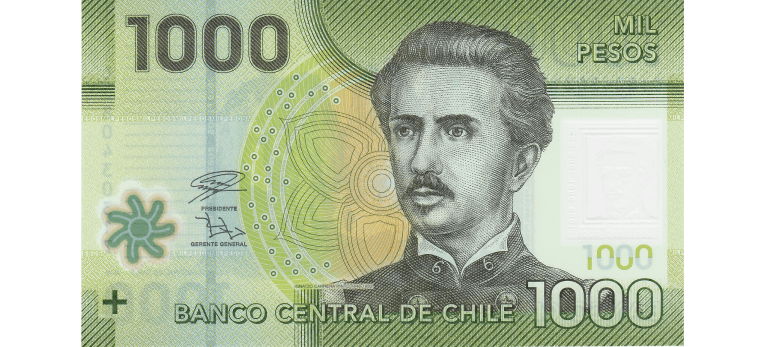Introduce país o moneda de destino:



La moneda oficial de Chile es el peso chileno (CLP). Su símbolo es $. El Banco Central de Chile la emite desde 1925, aunque entre 1959 y 1973, se utilizaron los escudos. Posteriormente, se estableció la equivalencia entre ambas monedas como 1 peso = 1000 escudos.

Los billetes de Chile actuales son de 20000, 10000, 5000, 2000 y 1000 pesos chilenos. En el pasado también hubo un billete de 500, pero ya está fuera de circulación. La Serie Bicentenario es la actual y lleva en curso desde 2009. Es de papel y tiene colores muy vivos.

Las monedas chilenas en circulación son de 500, 100, 10, 5 y 1 peso. Esta última ya no se fabrica, pero aún pueden encontrarse algunos ejemplares de gran valor en el mercado. Todas las monedas de Chile están fabricadas con bronce de aluminio, una aleación ligera de metales.

El antú, un símbolo mapuche que representa el sol que fecunda la tierra, está presente en todos los billetes de la nueva familia. Aparece tras la cara de todos los personajes ilustres reflejados en la Serie Bicentenario y forma parte de los elementos de seguridad.

Las primeras monedas de Chile eran lisas, no tenían figuras ni relieves en el reverso o el anverso. El objetivo era que las personas con discapacidad visual pudieran identificarlas con mayor facilidad. Posteriormente, se implementaron otras medidas de seguridad en ellas.




*Los billetes y monedas corresponden a la serie emitida más nueva y son de referencia. Pueden variar los colores y pueden existir más diseños de los que se muestran.